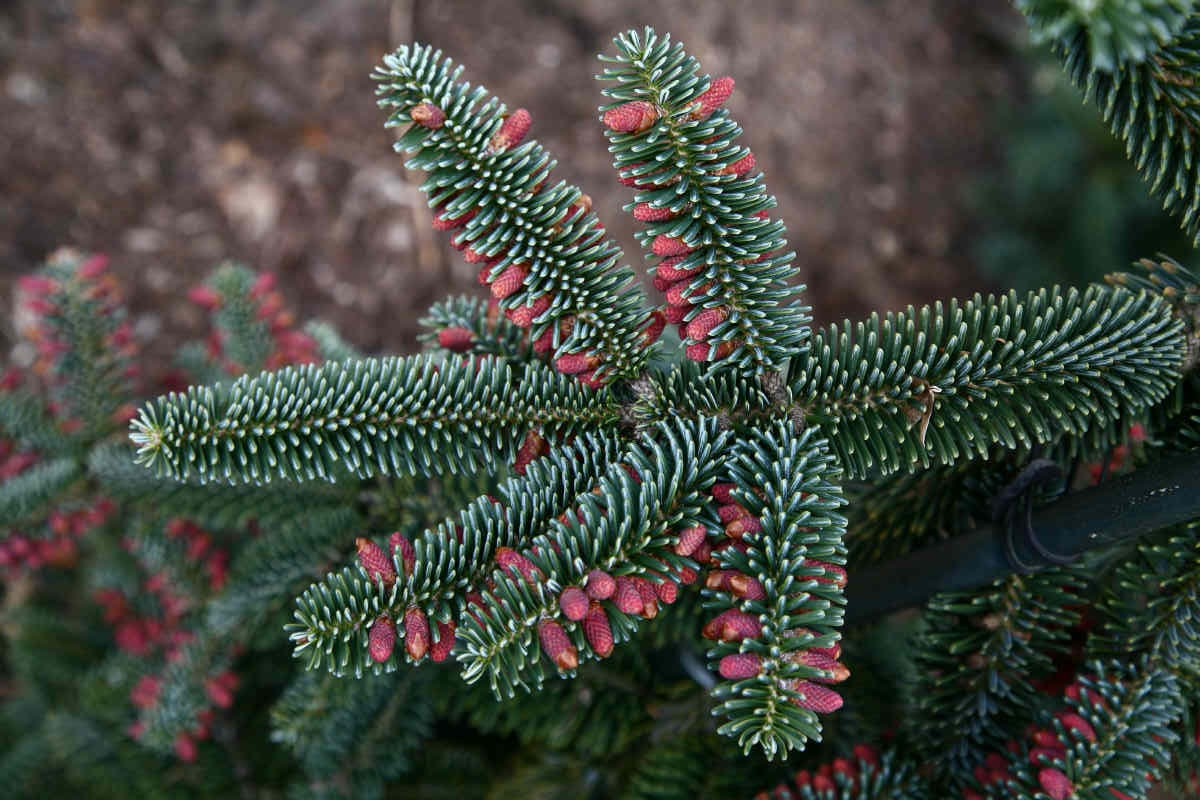Abies koreana Hybrids
Sponsor
Kindly sponsored by
Sir Henry Angest
Credits
Tom Christian (2021)
Recommended citation
Christian, T. (2021), 'Abies koreana Hybrids' from the website Trees and Shrubs Online (treesandshrubsonline.
Genus
Other taxa in genus
- Abies alba
- Abies amabilis
- Abies × arnoldiana
- Abies balsamea
- Abies beshanzuensis
- Abies borisii-regis
- Abies bracteata
- Abies cephalonica
- Abies × chengii
- Abies chensiensis
- Abies cilicica
- Abies colimensis
- Abies concolor
- Abies delavayi
- Abies densa
- Abies durangensis
- Abies ernestii
- Abies fabri
- Abies fanjingshanensis
- Abies fansipanensis
- Abies fargesii
- Abies ferreana
- Abies firma
- Abies flinckii
- Abies fordei
- Abies forrestii
- Abies forrestii agg. × homolepis
- Abies fraseri
- Abies gamblei
- Abies georgei
- Abies gracilis
- Abies grandis
- Abies guatemalensis
- Abies hickelii
- Abies holophylla
- Abies homolepis
- Abies in Mexico and Mesoamerica
- Abies in the Sino-Himalaya
- Abies × insignis
- Abies kawakamii
- Abies koreana
- Abies lasiocarpa
- Abies magnifica
- Abies mariesii
- Abies nebrodensis
- Abies nephrolepis
- Abies nordmanniana
- Abies nukiangensis
- Abies numidica
- Abies pindrow
- Abies pinsapo
- Abies procera
- Abies recurvata
- Abies religiosa
- Abies sachalinensis
- Abies salouenensis
- Abies sibirica
- Abies spectabilis
- Abies squamata
- Abies × umbellata
- Abies veitchii
- Abies vejarii
- Abies × vilmorinii
- Abies yuanbaoshanensis
- Abies ziyuanensis
Several hybrids of A. koreana have been raised by nurseries and specialist growers; very few are in wide circulation except a few forms of A. koreana × A. lasiocarpa (Auders & Spicer 2012). Unsurprisingly, however, there are often problems with identification: for several years a European supplier has intermittently been selling plants labelled simply A. koreana when in fact these are a form of koreana × lasiocarpa. This isn’t necessarily regrettable, for the best forms of this cross make rather handsome small garden trees, but the hybrid is amply distinct from ‘pure’ forms of A. koreana and a dilligent horticulturist ought to be able to spot an imposter.
The horticultural merit of the more obscure hybrids, which are becoming increasingly fashionable, is yet to be adequately tested.
A. koreana × A. lasiocarpa
Synonyms / alternative names
Abies × koreocarpa
A cultivated hybrid between A. koreana and A. lasiocarpa intermediate between its parents. Individual leaves tend to resemble A. lasiocarpa, usually being longer and narrower than in A. koreana, but their arrangement on the shoots is more or less radial, as in A. koreana. Several cultivars are assigned here by Auders & Spicer (2012); see below:
- ‘Diskus’ A cultivar of this name and parentage is illustrated and discussed by Auders & Spicer (2012, p.110–111) but neither convincingly demonstrates the influence of A. lasiocarpa. This may be a misassigned cultivar. The plant described by those authors forms a squat pyramid to <1 m in ten years, with broad, green leaves. It was listed by the Bethlehem Nursery, USA, in 2007.
- ‘Festival’ A compact plant, broader than tall for the first few years but soon developing into a small conical tree with pale blue leaves, to 2 m in ten years. Raised in the Netherlands during the 1990s.
- ‘Grosseri’ Raised in Czechia prior to 2009, but the cultivar name in Latin form is invalid if published after 1959, which it almost certainly was. This selection is described as a small, compact plant with green leaves, rather than the usual grey-green or blue.
- ‘Hobbytime’ A vigorous selection, broad-pyramidal in habit, with pale blue leaves. More vigorous than ‘Hurricane Blue’, it can achieve 2.5 m in ten years. Possibly raised in the Netherlands in the early 2000s.
- ‘Hurricane Blue’ Perhaps the most common form of the cross, in many respects similar to ‘Hobbytime’ though not quite so vigorous. Possibly of North American origin, it was first listed by Buchholz & Buchholz of Oregon in 2009.
- ‘Waldgrenze’ A German selection raised prior to 2001 by the Wittboldt-Müller Nursery. It is described as being upright in habit and slow-growing, with blue leaves
A. koreana × A. pinsapo
Seemingly a recent cross, perhaps of Dutch origin; Auders & Spicer suggest forms of it were first cultivated by Wiel Linssen in the 1990s. Another was raised in Germany prior to 2006. Some have a very complex parentage, involving a back-crosses with named selections of one or both of the parent species, and it remains to be seen whether these will be stable enough to gain a foot hold in collections (Auders & Spicer 2012).
A. koreana × A. procera
A recent cross, possibly raised by the late Aris Auders. Auders & Spicer (2012) give very little information, merely noting its existence, although with the unfortunate fashion for increasingly bizarre crosses we probably haven’t heard the last of it.

